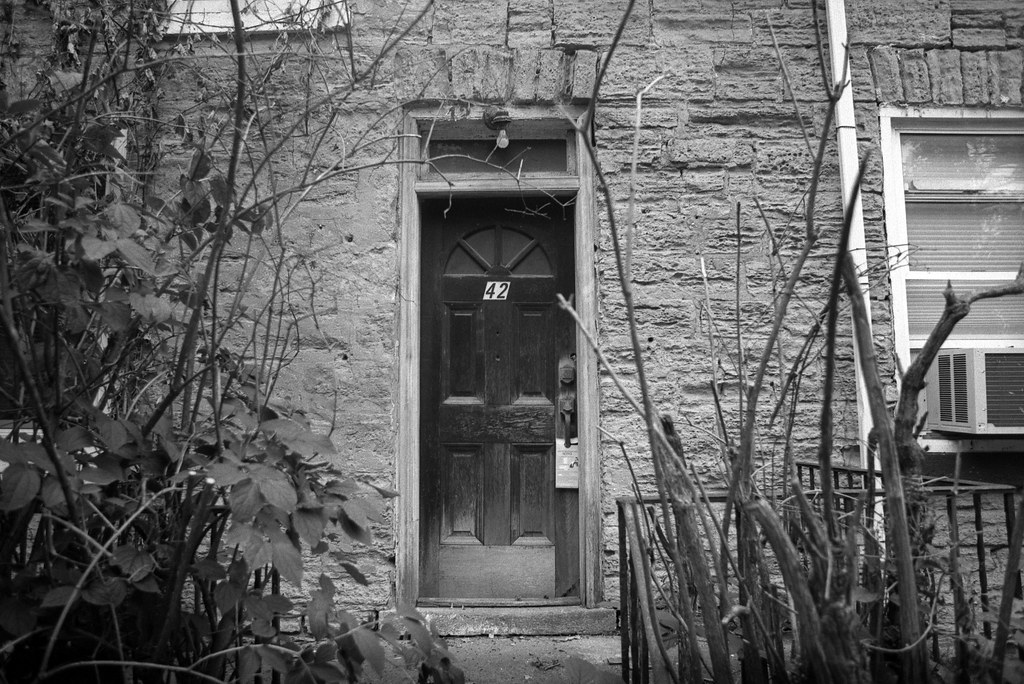I never considered the village of Waterdown a good spot for photography, sure I knew about the trail and the waterfall at Grindstone Creek, better known as Smokey Hollow. But a chance morning to get out and do some photography landed me in this historic village, and I immediately knew that I had to include it for this project as more than the waterfall makes for good photographs.

The area where Waterdown eventually grew has been occupied by humans as far back as 7,500 BCE. Still, the first known peoples were the Chonnonton Nation, one of the many civilizations known collectively as the Neutral Nations. They were driven from the region by the deadly Beaver Wars through the 1650s as the Iroquois from the south were driven to battle by Colonial Powers. Additionally, French missionaries introduced new and unknown illnesses that ripped through the people. The Haudenosaunee would establish their own village, Tinawatawa, one of the few permanent settlements in conquered territories. In 1669, the first European arrived in the area, French explorer Robert de la Salle. But they also moved on, and the Mississagas established their own presence in the region. The Mississaugas ceded the territory under the 1784 Treaty with the Crown and further confirmed under Treaty No. 3 in 1792. Initial surveys laid out the township of Flamborough as a single township but would be split into East and West. The area’s earliest European settlers were loyalists fleeing from the Thirteen Colonies, Lieutenant Alexander McDonell of Butler’s Rangers, who purchased a lot but never took possession instead of selling eight hundred acres to Alexander Brown of the North West Fur Company 1802. Brown constructed a cabin and sawmill atop the great falls on what is today Grindstone Creek in 1805. The presence of a mill quickly gained a following, and soon other lots were purchased and settled; Brown constructed a school in 1815, hiring one Mary Hopkins, the school sat where the pub “The American House” sits today. In 1823, Ebenezer Griffin purchased some 400 acres from Brown and began surveying a proper townsite that took form in 1830 and 1840, a post office arrived. Local myth points to Griffin as the community’s founder and for the name Waterdown. A prohibitionist, Griffin disapproved of the consumption of alcohol, which in the Victorian age was consumed in vast quantities. During the christening of a new mill, usually done with whiskey, someone asked Griffin to ‘thrown that water down’ the owner of the sawmill promptly named his mill Waterdown and it stuck. The Great Falls and Grindstone creek offered a rich power source, and soon mills filled the valley; and as steam power supplanted water, the coal-burning mills and factories filled the air with smoke earning the nickname Smokey Hollow. Waterdown was incorporated as a village in 1879. Industry only grew through the 20th Century, but many mills and factories were closed by the second decade of the 20th Century. The natural features came back, and the smokey hollow quickly cleared and now offers up a beautiful (if not technically difficult) trail. Despite its industry, Waterdown never broke into the town status and instead was re-absorbed into Flamborough Township in 1974 and 2001; the township was absorbed into the City of Hamilton.


While I wanted to include more images from around the falls, there was far more foliage cover than expected. Having already shot most of the roll earlier at ASA-100, I could not bump up the speed without drastically changing how I developed the film. The problems with film photography, eh? Either way, I ended up getting one decent shot of the gorge that you can see the waterfalls or at least the creek at the base of the falls. From there, I filled in with a selection of historic buildings throughout the village, the original West Flamborough Township Hall, which looks more like something you’d find in New England than Ontario (save the original Woodstock Town Hall), the American House a historic hotel and tavern, and some houses and businesses.


I was shooting primarily in an urban environment, so I went with my trusty 28mm f/3.5 lens. But given the small area where I was shooting, I also included my 135mm f/2.8 lens to get some details and a natural feature (the waterfall) which was harder to get in closer. Sadly it was far too dark to get a good shot with the 135mm, and the only images included here were shot on the 28mm. I was presented with an excellent day but still decided because of shooting down in the valley and with a longer lens, I shot the film at box speed of ASA-100. Developing, I went back to an old favourite, Adox Rodinal, at the 1+50 dilution, might as well end the Fomapan 100 run with a trusted and favourite developer. However, I did use Ilfotec HC more with Fomapan 100. Even without the Yellow filter, I got some decent results, mainly because there was some cloud cover while I was out.


Next week, we’re heading back to the Halton parks system and taking a trip up the Niagara Escarpment to one of the easiest trails, Mount Nemo and the old quarry it’s based around.